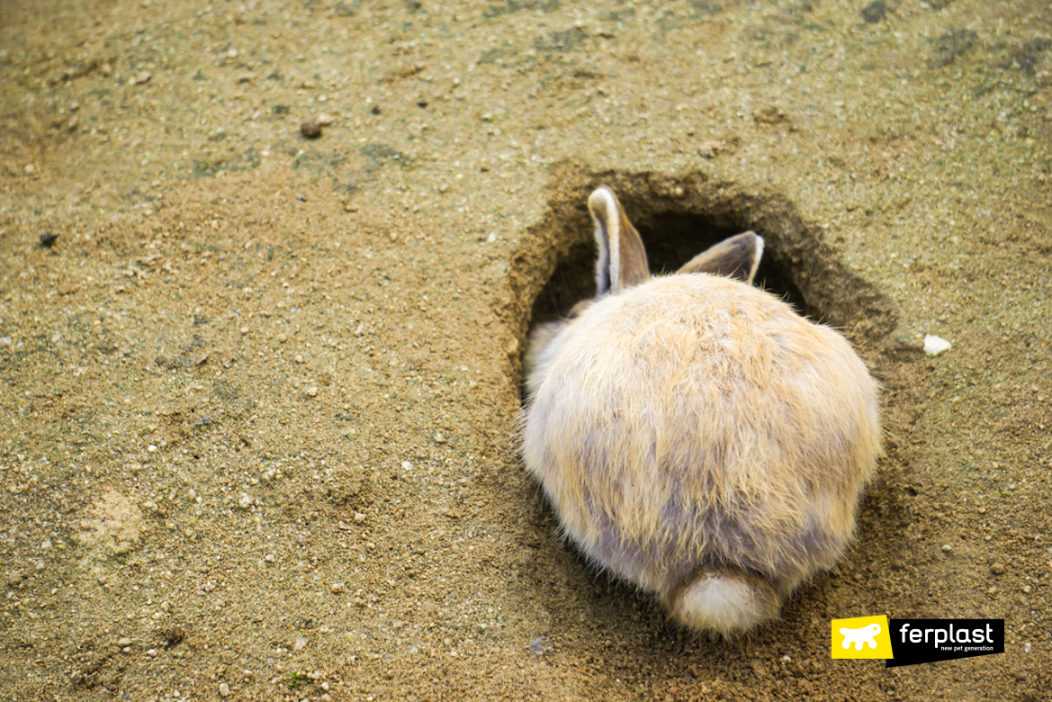How Do Rabbits Make Burrows?
Rabbits are known for their ability to dig intricate burrows in the ground. These burrows serve as their homes and provide them with protection from predators and harsh weather conditions. But have you ever wondered how rabbits actually make these burrows? Let’s explore the fascinating process behind rabbit burrow construction.

The Need for Burrows
Rabbits are small, herbivorous mammals that are preyed upon by a variety of predators, including foxes, coyotes, and birds of prey. In order to protect themselves and their young, rabbits have evolved the instinct to dig burrows as a means of escaping danger and finding shelter.
Rabbit burrows also play a crucial role in regulating their body temperature. Rabbits are not able to sweat, so they rely on the cool underground environment of their burrows to escape the heat during hot summer months. Similarly, burrows provide insulation and protection from the cold during winter, helping rabbits survive in harsh weather conditions.
Choosing the Right Spot
Before digging a burrow, rabbits carefully select an appropriate location. They typically choose areas with soft soil, such as meadows or fields, where digging is easier. The location also needs to provide good visibility, allowing rabbits to spot approaching predators in time to retreat into their burrows.
It’s important to note that rabbits are not solitary animals, and they often live in colonies referred to as warrens. These warrens can consist of a complex network of interconnected burrows, providing a safe haven for multiple rabbits.
The Digging Process
Once a suitable location has been found, rabbits begin the digging process. Their powerful hind legs and strong claws are their primary tools for excavation. Rabbits use their hind legs to kick and push the soil, while their sharp claws help to loosen the ground. The process is a combination of digging and pushing the soil backward, creating a tunnel.
As the tunnel deepens, rabbits use their mouths to remove loose soil and create a pathway for easier movement. They push the soil out of the entrance of the burrow, creating a mound known as a spoil heap. This helps to keep the entrance clear and provides an early warning system for predators, as any disturbance to the entrance mound will alert the rabbits inside.
The Architecture of Rabbit Burrows
Rabbit burrows are more than just simple tunnels. They have a complex architecture that serves different purposes. Here are some key features:
- Entrance: The entrance is the main access point to the burrow. It is usually hidden among vegetation or in tall grass to provide camouflage.
- Living Chambers: Rabbits create multiple living chambers within their burrows. These chambers serve as sleeping and resting areas, as well as locations for giving birth and raising young.
- Escape Routes: Burrows often have multiple escape routes to ensure rabbits have alternatives if one entrance is blocked or compromised.
- Tunnel Systems: Rabbit burrows consist of an intricate network of tunnels that can extend several feet underground. These tunnels may have different levels, allowing rabbits to move vertically as well as horizontally.
Frequently Asked Questions (FAQs)
1. Why do rabbits dig burrows?
Rabbits dig burrows to protect themselves from predators and harsh weather conditions. Burrows also provide a cool environment during hot summers and insulation during cold winters.
2. How long does it take for a rabbit to dig a burrow?
The time it takes for a rabbit to dig a burrow depends on various factors, including the soil type and the complexity of the burrow. On average, it can take a rabbit anywhere from a few hours to a few days to complete a burrow.
3. Do all rabbits live in burrows?
No, not all rabbits live in burrows. Some rabbits, such as cottontail rabbits, prefer to create shallow nests called forms in thick vegetation or under shrubs.
4. Can rabbits reuse old burrows?
Yes, rabbits often reuse old burrows created by other animals, such as ground squirrels or prairie dogs. They may modify these burrows to suit their needs or expand on existing networks.
In conclusion, rabbit burrow construction is a remarkable process driven by the instinct to seek protection and create a suitable habitat. By digging intricate tunnels and chambers, rabbits create a safe haven for themselves and their young, enabling them to thrive in their natural environments.
Related Articles…
Copyright Notice:
This website utilizes images found online, all copyrights are retained by their original owners. If you would like an image removed, kindly contact us.